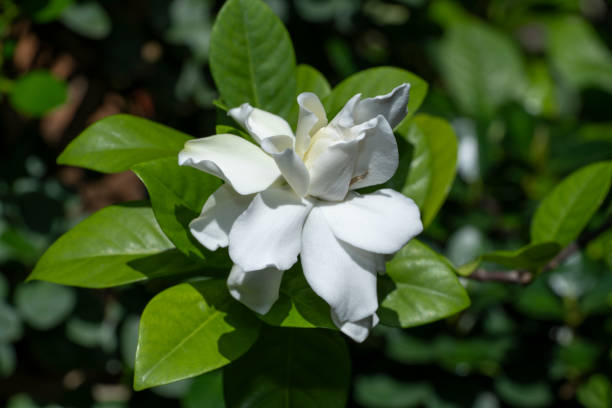How To Trim Gardenia Bushes | The Best Way To Maintain Your Bushes
Pruning gardenias is important for the overall health of the bush and for producing blooms. This article will discuss when and how to trim gardenia bushes.

Table of Contents
When To Trim Overgrown Gardenia Bushes?
Gardenia bushes grow quickly and can become unmanageable if not kept in check. Trimming them during the early stages of their growth will help to prevent them from becoming too large and out of control. Overgrown gardenia bushes can be trimmed at any time of the year.
There are certain times when they are most likely to need attention.
In the spring and early summer, gardenia bushes may be in the process of blooming and will produce large amounts of pollen. This pollen can cause the bush to become unruly and grow rapidly. So, you can remove dead and broken branches.
You can also trim back the branches as needed to maintain a tidy appearance. After the flowers have faded, prune away any dead or diseased branches.
Later in the summer, gardenia bushes may start to produce fruit. This fruit will contain seeds that will need to be removed before winter arrives. If you do not remove the fruit, it will eventually decay and cause damage to the bush.
After the leaves change color in late fall, remove any dead or diseased branches.
Finally, Gardenia bushes may start to die back in winter due to cold temperatures. Cut off damaged branches and deadwood.
However, it is best to do so during the dormant season and after the last bloom drops. It’s based in late winter or early spring when new growth begins. This will minimize the amount of damage done to the bush and reduce the need for future maintenance. Also, it will help to remove any dead or diseased branches and allow the bush to grow more evenly.

How To Trim Gardenias Bushes?
Suppose you notice that your gardenia bush is starting to grow too tall or has started to spread beyond its original boundaries. In that case, it is time to trim it back. You can do this by cutting off the top portion of the bush, leaving a few branches growing at the base. This will help keep the bush in check and maintain its desired shape.
- Prepare the area before you start trimming by removing any debris on the ground or around the plants. This will help make the job easier and reduce potential injuries.
- Identify the bush and determine its height. You will also need to know the width of the bush at its widest point.
- The next step is to how much growth you want to remove. If you just want to trim the tips of the branches, then you will only need to cut about 1/2 inch from the end of the branch. If you want to remove more growth, you will need to cut closer to the branch tip.
- Make sure that you wear gloves and safety goggles when trimming the bush because it can be dangerous if the leaves get into your eyes.
- Use a pair of hedge clippers or an electric hedge trimmer to cut the bush down.
- You can start trimming by cutting off any branches that are too long or crooked. Trim them close to the trunk but be careful not to cut into the bark or leaves below. Make sure that the cuts you made are at a slight angle so that the tree will not bleed.
- Finally, remove any dead or diseased branches from the bush. You should water the bush and fertilize it once a month if necessary.
